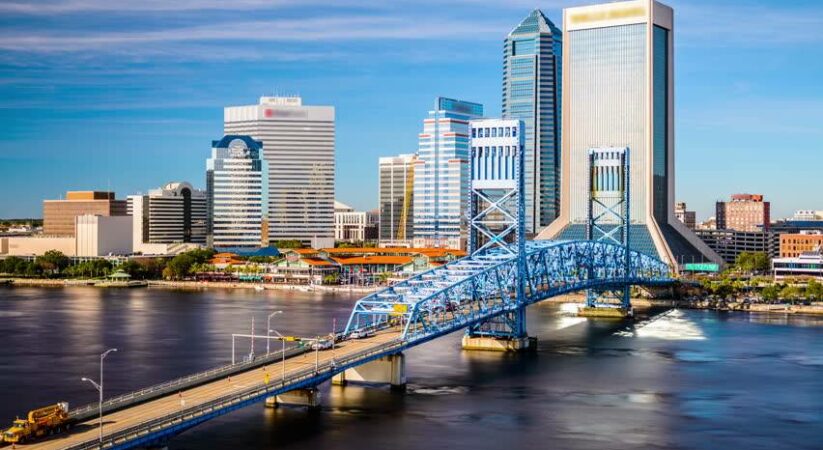Based on data from the 2023 Census, Florida has more over 22.6 million residents, making it the third most populated state in the United States. It is also among the ones that is expanding the fastest at the same time. According to the Demographic Estimating Conference’s projections, the population of the state is expected to increase by 1.25 percent annually on average between 2023 and 2030. Florida is predicted to expand at a rate 0.82% faster than the national average, which is 0.43% each year.
A quick look at the history of Florida’s population growth statistics further confirms that the state’s growth has always been consistently positive. In the 1950s, the state’s annual growth rate averaged 6.1 percent, and in the following two years (1956-1957) it averaged 8 percent. While the national average growth rate over the past few years has been between 1.5% and 2%, Florida’s 8% growth makes it one of the fastest growing states. In the 1960s, after the baby boom, Florida’s growth rate slowed slightly. Nevertheless, the state’s population continued to grow at an average annual rate of 3% from 1960 to 1989.
Similarly, during the 2000s, Florida’s population grew at a “slow” yearly rate of 1.7%, compared to the 1% national average. The national average growth rate decreased from 0.9% to 0.5% between 2010 and 2020, while Florida’s rate varied from 1% to 2%. According to Census Bureau data, Florida grew at a 1.9% annual pace between 2021 and 2022, making it the state with the fastest rate of growth in the US once more.
Here’s the list of 5 Fastest Growing Cities in Florida.
5. Palm Coast
Population Change Rate (2020-2022): 8.81D
Palm Coast is known worldwide for its scenic coastal green spaces, including parks, trails, and nature preserves, and is a major contributor to the health sector and economy. The whole thing is thriving. With total revenues exceeding $473,000, the City’s Health and Human Services Department plays an important role in the City’s economic health. However, access to health care remains an issue, with 16.0% of individuals under 65 years of age without health insurance. With 52.1% of the population in the civilian workforce, there is also potential for further economic growth and job creation in the city. Palm Coast’s population density is approximately 936 people per square mile, reflecting a balanced combination of city and suburban living within its coastal charm.
4. Fort Myers
Population Change Rate (2020-2022): 9.04D
Fort Myers ranks 4th on the list with a population of 95,949 as of July 2022 and a population growth rate of 9.04% is. The city is home to people of various ethnic backgrounds, with approximately 55.9% of residents being White, 23.7% Hispanic or Latino, and 2.1% Asian. Looking at the age group of the population, 6.3% of the city’s residents are under 5 years old, 20.4% are under 18 years old, and adults over 65 years old account for 22.4% of the total population, and excluding female residents. In Fort Myers, 31.3% of people over the age of 25 have a bachelor’s degree or higher.
3. Cape Coral
Population Change Rate (2020-2022): 9.94D
Third on the list, Cape Coral is one of the fastest growing cities in the United States, with a population of 9.94% in Florida Increased has. 2020-2022. Such impressive growth rates inevitably draw attention to the city’s health, economic and housing sectors. Unfortunately, from a health perspective, 9.1% of people under 65 have a disability and 16.4% do not have health insurance.
However, the city’s Health and Human Services revenue totaled $677,703 in 2017, according to the U.S. Census Bureau. Even though nearly half of the population (57.9% over the age of 16) contributes to the labor force, per capita retail sales are just over $9,000 in economic terms. Turning to the housing sector, the condominium rate in the city is high at 77.4%, with a median price of $302,400. The average gross rent is over $1,000, covering the diverse housing needs of more than 76,800 households.
2. Port St. Lucie
Population Change (2020-2022): 10.77D
Port St. Lucie ranks second on the list, 13th fastest growing in the U.S. and second fastest growing in Florida. This is the city where I live. We have a diverse and dynamic community with a total population of 63.3% White, 18.3% Black or African American, 2.2% Asian, and 22.9% Hispanic or Latino. Furthermore, 90.7% of city residents over the age of 25 have a high school diploma and 26.2% have a bachelor’s degree or higher. Economically, Port St. Lucie has a high labor force participation rate, with 59.8% of the population over the age of 16 actively engaged in the civilian labor force. The city also has per capita retail sales of approximately $10,000, indicating a strong business environment.
1. North Port
Population Change Rate (2020-2022): 12.49D
North Port is Florida’s fastest growing city with a population of over 85,000. With a median household income of more than $78,000 and a low poverty rate of 6.3%, North Port exhibits economic prosperity and fiscal stability. The city’s high labor force participation rate of 51.9% also contributes to its economic health. In terms of the housing market, Northport also has a high condo rate of 79.5%, with an average gross rent of over $1,500. The city’s demographics are wide-ranging in terms of age, with 5.1% of residents under the age of 5, 17.7% under the age of 18, and 28.4% over the age of 65. Northport is also America’s 9th fastest growing city.
- Mac Miller’s Long-Awaited Album ‘Balloonerism’ Drops Soon - November 22, 2024
- WhatsApp Announces Upcoming Voice Message Transcription Feature - November 22, 2024
- Google doodle celebrates the Lebanon’s Independence Day - November 22, 2024





